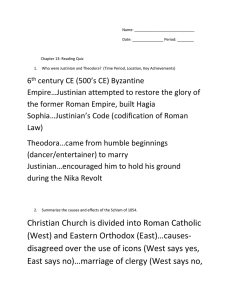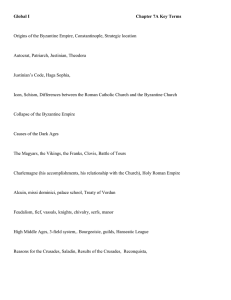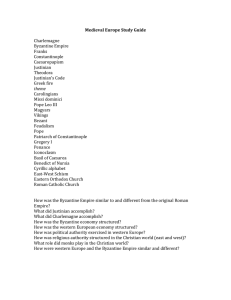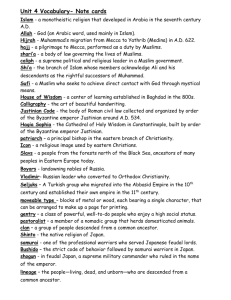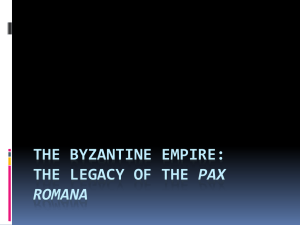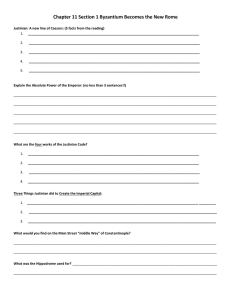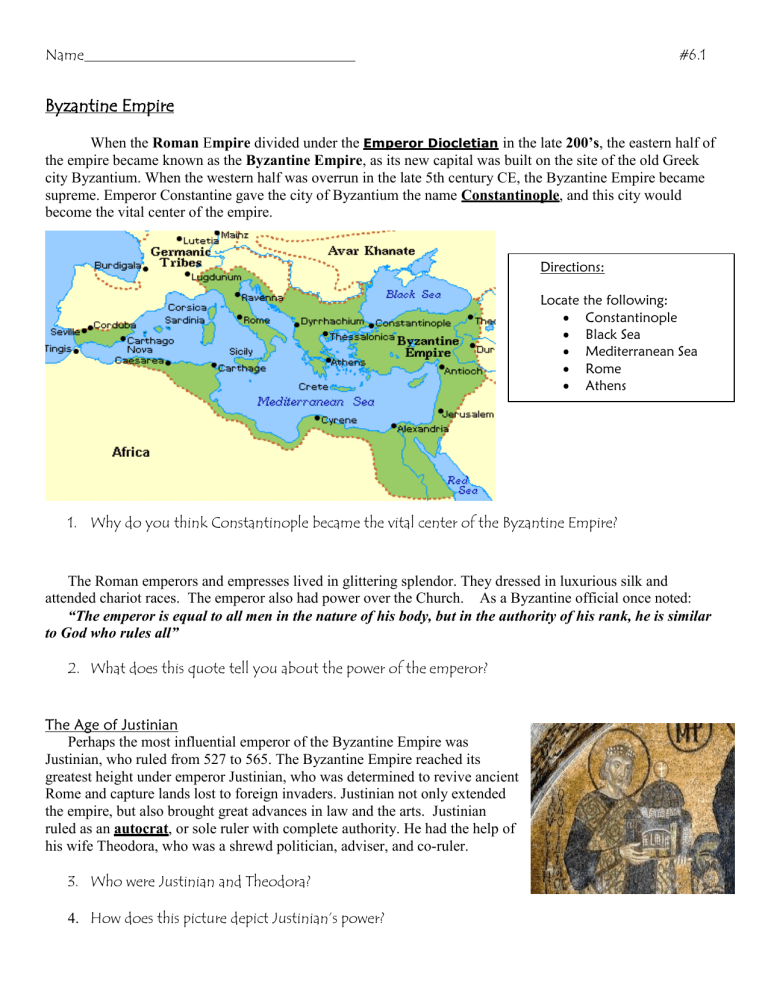
Name #6.1 Byzantine Empire When the Roman Empire divided under the Emperor Diocletian in the late 200’s, the eastern half of the empire became known as the Byzantine Empire, as its new capital was built on the site of the old Greek city Byzantium. When the western half was overrun in the late 5th century CE, the Byzantine Empire became supreme. Emperor Constantine gave the city of Byzantium the name Constantinople, and this city would become the vital center of the empire. Directions: Locate the following: Constantinople Black Sea Mediterranean Sea Rome Athens 1. Why do you think Constantinople became the vital center of the Byzantine Empire? The Roman emperors and empresses lived in glittering splendor. They dressed in luxurious silk and attended chariot races. The emperor also had power over the Church. As a Byzantine official once noted: “The emperor is equal to all men in the nature of his body, but in the authority of his rank, he is similar to God who rules all” 2. What does this quote tell you about the power of the emperor? The Age of Justinian Perhaps the most influential emperor of the Byzantine Empire was Justinian, who ruled from 527 to 565. The Byzantine Empire reached its greatest height under emperor Justinian, who was determined to revive ancient Rome and capture lands lost to foreign invaders. Justinian not only extended the empire, but also brought great advances in law and the arts. Justinian ruled as an autocrat, or sole ruler with complete authority. He had the help of his wife Theodora, who was a shrewd politician, adviser, and co-ruler. 3. Who were Justinian and Theodora? 4. How does this picture depict Justinian’s power? During his reign as emperor, Justinian achieved many things for the Byzantine Empire. Let’s take a look at some of his accomplishments Re-conquered Foreign Lands During his reign, Justinian was able to regain lands that were lost to foreign invaders. Byzantine armies re-conquered parts of North Africa, Italy, and Southern Spain. 5. What lands did Justinian and his armies re-conquer? 6. Why do you think it was so important for Justinian to regain these lands? Hagia Sophia Justinian launched a program to beautify Constantinople. Perhaps his most famous architectural accomplishment was the church of Hagia Sophia, which means “Holy Wisdom.” The interior glowed with colored marble and silk curtains. Seeing this church, the emperor recalled King Solomon’s temple in Jerusalem. He said: “Glory to God who has judged me worthy of accomplishing such a work as this! O Solomon I have surpassed you!” 7. What was Hagia Sophia? 8. What does this quotation tell us about Justinian? Justinian’s Code The Byzantine emperor Justinian is best remembered for organizing ancient Roman laws into a collection of civil laws known today as Justinian's Code. Justinian collected, revised, and organized all the laws of Ancient Rome to create his code. It was so successful, that later rulers only added to it or updated it periodically. Justinian's Code became the foundation of medieval law, and was even used by the Roman Catholic Church. Today, international law still uses some concepts first assembled by Justinian. 9. What was Justinian’s Code? What can we compare it to? 10. Why is his code so important?
